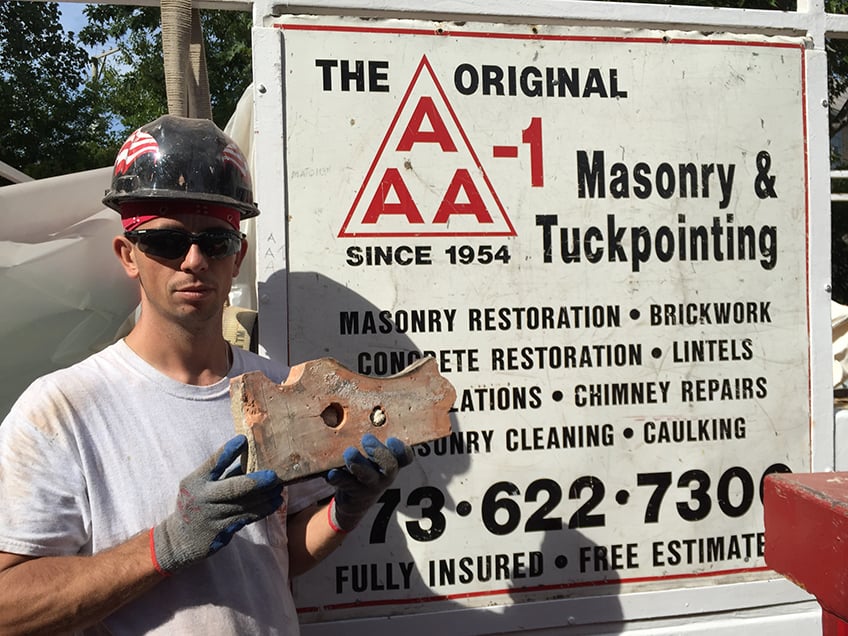
Here Kamil holds up a sample of the brick used to construct the defective chimney. Look at that unusual undulating shape...the Mae West of bricks!
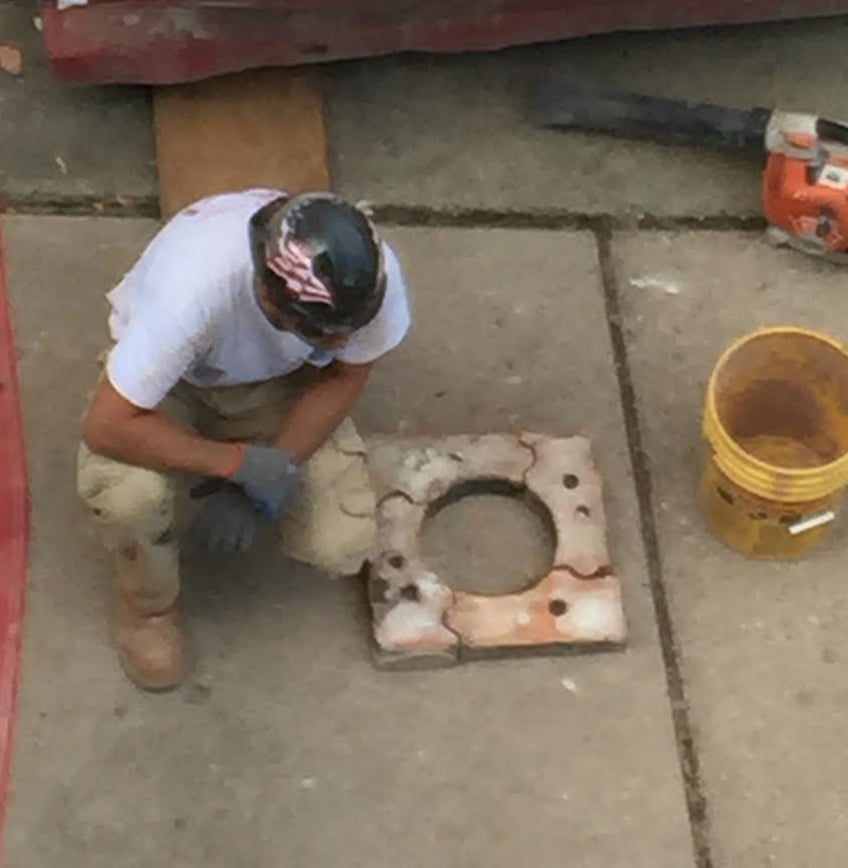
The design of this brick is unusual and clever. Four bricks laid at 90° angles make a nice looking circular chimney shaft. Too bad the brick is so porous and prone to spalling.
This week one we started up a project in the West Logan Square neighborhood of Chicago. The scope of work entailed dismantling and rebuilding deflected parapet walls and a failing chimney on a lovely 100-year-old two-flat constructed entirely of brick (no concrete blocks to be found in a structure of this vintage).
I had been called out to inspect this structure immediately following its purchase by the new owner. Usually a prospective buyer calls in AAA-1 Masonry & Tuckpointing before a deal closes in order to identify costly issues which may influence the final purchase price. In this case, however, the building had been sold slightly below market value by a friend of the prospective buyer in an "as is" condition. Very little maintenance had been performed on this building over the decades, so the opportunity to perform less costly maintenance repairs was no longer available, and the new owner now had to dismantle and rebuild parapet walls and chimneys in their entirety.
We knew there was something unusual about the west elevation chimney because it was sitting on its own concrete pad (odd for this era of construction; the entire two-story building was sitting on a brick foundation). We also noticed that the entire chimney shaft from top to bottom was heavily parged, indicating significant issues with the integrity of the chimney shaft. Sure enough when we took down the chimney we found that it had been constructed with a newer as-yet unidentified brick (see photos aboveat right). Neither I nor any of the masons had ever seen this type of brick before. And although it was cleverly designed (refer to second photo), the brick was not well constructed and appears to have failed long before any other area of the original building.
This particular chimney was used to vent two older furnaces responsible for heating the apartments. The new owner elected to replace the furnaces with two super-high efficiency units which allowed him to exhaust the furnace gases directly through the basement wall with PVC tubing, so the defective chimney did not need to be rebuilt (which saved the new owner many thousands of dollars and allowed him to afford additional repairs needed elsewhere).
Even for a masonry restoration company in continuous operation for more than 60 years, there is still more to discover, as evidenced here.
Should you have a crumbling parapet wall or a failing chimney, call us for an honest assessment and a free quote. Who knows what we will discover together!
—Rob
Post: New Parapet Wall Project in East Ravenswood
Wednesday September 16, 2015
It was an exciting day for us, as we started up a new masonry restoration project in the East Ravenswood neighborhood of Chicago. Not only is this masonry building a 100-year-old beauty full of quality hand-chiseled limestone elements, but the Condominium Association was extremely accommodating and moved all of their vehicles away from our staging area, unlocked all access points, and closed all of their windows prior to our 7:00am arrival.
This Condominium Association was unaware until very recently that large sections of their brick columns and parapet walls were starting to deflect and pitch severely due to decades of freeze/thaw action coupled with inadequate repair work (refer to photo below, typical). Despite the deflection in the wall, many "tradesmen" continued to tuckpoint (i.e., apply a thin coat of mortar over the existing mortar joints) because it was the most expeditious method of repair and did not require a permit to perform the work (many repairmen/handymen are not licensed mason contractors and lack the qualifications to legally procure Masonry Repair Permits within city limits).
On the brick column below at least three different mortar colors are apparent, meaning at least three separate applications of mortar had been made over the years. None of these mortar applications appear to be thicker than one's fingernail, so none of the repair mortar is capable of renewing the bond between the bricks or effectively thwarting wind-driven rain and sleet.
I'll be posting more pictures of this project as work continues over the course of the next week.
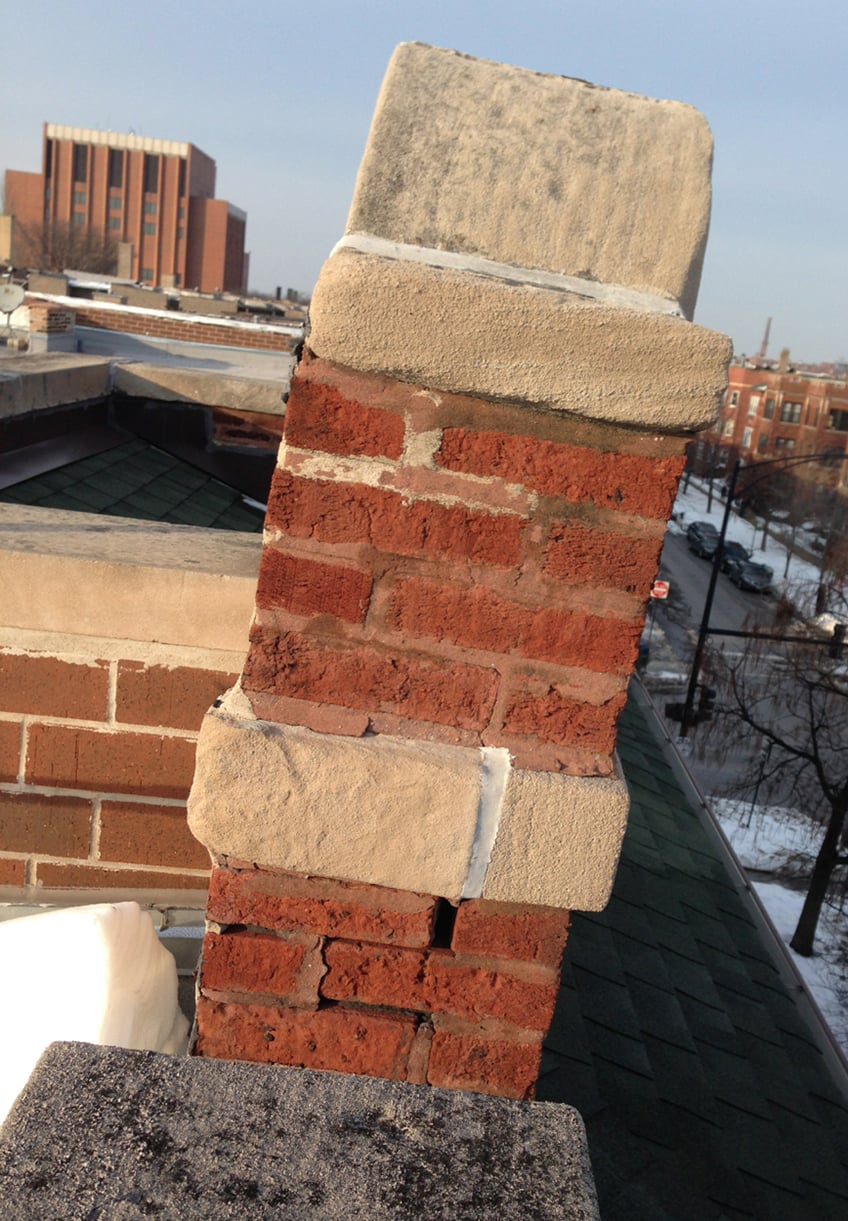
Post: Former Dairy Undergoes Masonry Transformation (Part 1)
Tuesday July 14, 2015
This is part one of a two part post. Read the second part here.
The men are very excited to return to Carpentersville to work on another magnificently constructed 19th-century masonry building (this time a former dairy).
At the time this photo was snapped, the owner's demolition crew had already removed the flooring, the mechanicals, the roof and the old-growth roof joists.
The 16"-thick masonry walls were constructed almost entirely with Milwaukee Cream common bricks, which were quite prevalent in this region at the time this 125-year-old structure went up.
To provide a sense of sense of scale, the men have positioned themselves along the perimeter of the space.
Check back over the next few weeks to see more photos documenting the transformation of this former dairy.
Read more about this project, and see "before and after" shots in the second part of this post.
Post: Some Thoughts About Safety (#2 In a Series)
Thursday July 2, 2015
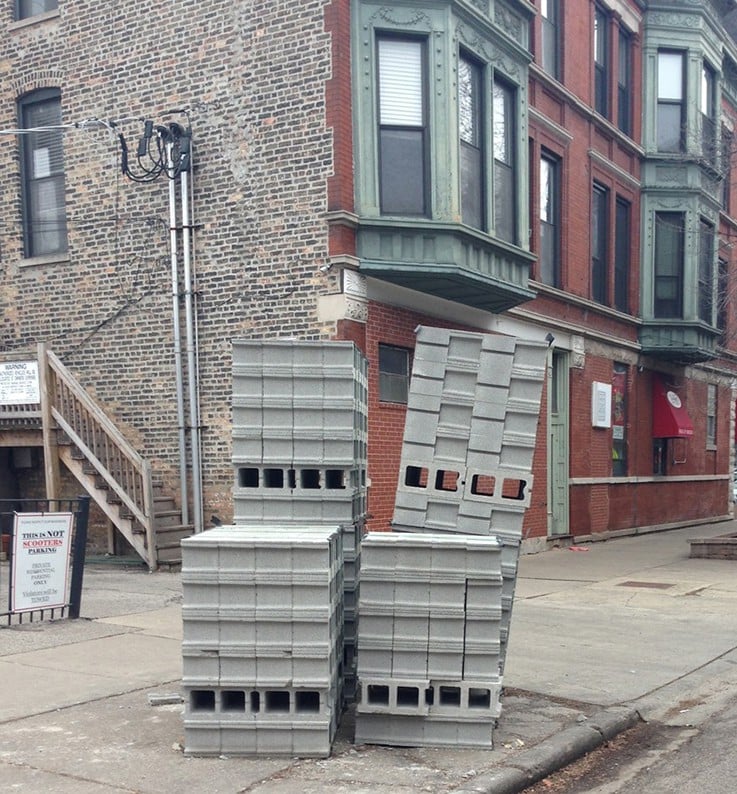
This is the second in an ongoing series of safety-related posts.
See entries Part 1 and Part 3.
I was driving through Chicago's Lakeview neighborhood and saw how a mason contractor had "staged" these concrete blocks.
When you figure that each of these concrete blocks weighs about 25 pounds when wet (it had rained the night before and these blocks were very saturated), this tippy tower weighs over 3500 pounds, certainly enough to break a bone or worse.
The increase in time required to properly stage materials is negligible if you have the right training and know what you are doing. If you see dangerous and hazardous condition like this, call 311 right away and report it.
Be safe out there.
-Rob
Post: Some Thoughts About Safety (#1 In a Series)
Monday June 29, 2015
This is the first in an ongoing series of safety-related posts. See later entries Part 2 and Part 3.
I was recently driving up Damen Avenue on the north side of Chicago. A group of masons I did not recognize were working on restoring this garage parapet wall. What I saw concerned me greatly, so I pulled over and snapped this photo.
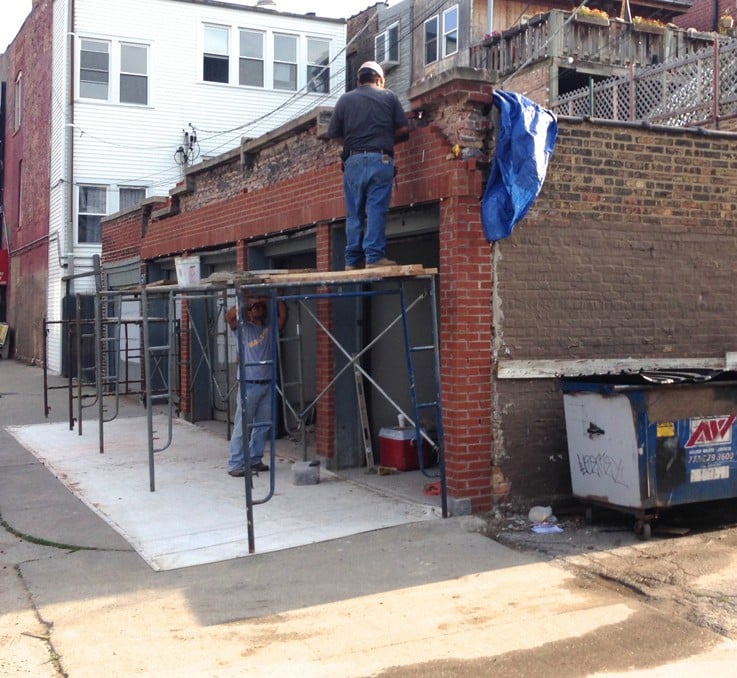
Regarding safety, this is what concerned me:
- The metal legs of the pipe scaffolding are sitting directly on the concrete driveway apron. Because the mason did not use base plates and mud sills to level the set-up, the pipe scaffolding is pitching away from the building at the same angle as the concrete driveway apron upon which it is standing. This increases the likelihood of the scaffolding tipping over and the mason getting injured.
- No back rails have been installed to prevent the mason from accidentally stepping or falling off the scaffolding! Because falls of 6 vertical feet or greater are considered potentially lethal by the Occupational Safety & Health Administration (OSHA), any person standing on this type of pipe scaffolding needs to wear a safety harness and be tied off if no back rails are installed (there are no back rails on this scaffolding and the mason is not wearing a harness).
- See the assistant standing under the scaffolding? For his own protection from head injuries, OSHA requires that he wear a hard hat. (In this photo the mason standing on the scaffolding is the only one wearing a hard hat.)
Regarding the work performed, this is what concerned me:
- The mason has elected to strip just the outside layer (i.e., wythe) of brick from this parapet wall and leave the back-up brick wall untouched — even above the roofline. The process of removing the outside face brick requires pounding and vibrating the entire parapet wall, and this action loosens up all the bricks…even the ones the mason is not planning to replace. The compromised mortar bond resulting from all that pounding leads to premature deterioration of the back-up wall he is not rebuilding!
- The mason has chosen not to remove the capstones and install a through-wall flashing detail. This leaves the wall susceptible to water infiltration between the capstones (where stone touches stone) and under the stone (where stone touches the first course of brick). Any time a mason is rebuilding any number of wythes of a parapet wall, it is always prudent to remove the capstones, provide through-wall flashing and stainless steel drip edges, and re-set the capstones.

